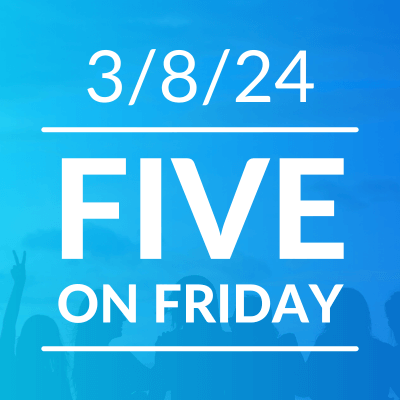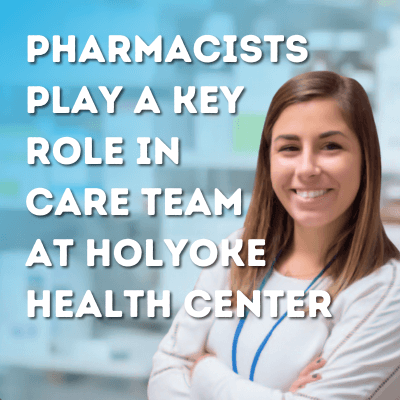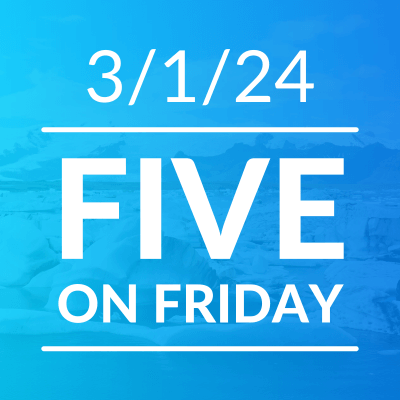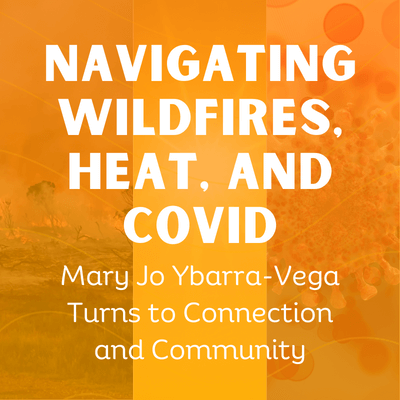Nine Practices to Cope with a Looming Catastrophe
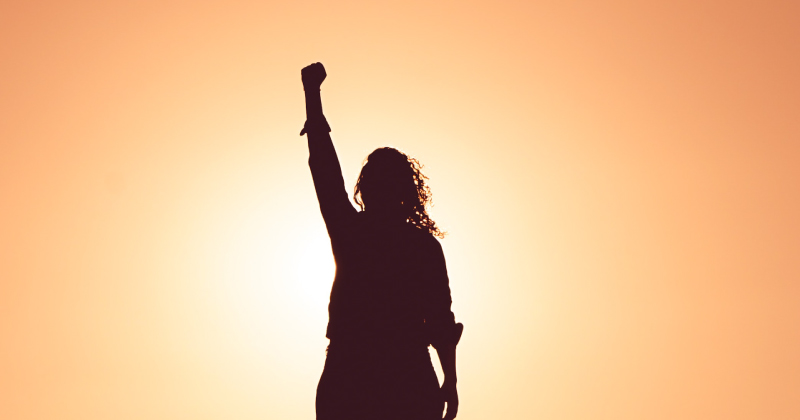
[Editor’s Note: This article, originally published on Medium last month, was written by Migrant Clinicians Network’s Kaethe Weingarten, PhD, Director of Witness to Witness. In the last year, clinicians across the country have had to work through disaster after disaster, with multiple waves of COVID-19 in their communities, insufficient protective equipment, the startling loss of life, the grief of losing loved ones, the fear of spreading the virus to family. Dr. Weingarten’s advice, from her personal experiences, provides practical strategies to cope in a continuously chaotic and stressful world. Learn more about Witness to Witness here.]
I’ve been told seven times that I had a life-threatening disease. Last Tuesday, I was told I might be going blind. This was shocking but not paralyzing. I did what I do. I got a second opinion on Wednesday. I also stopped eating and I didn’t sleep well. That Wednesday, the specialist confirmed that blindness might be imminent; but the cause was uncertain. There was a chance the testing was unreliable. Only time would tell.
Thursday I woke up early and noticed that I felt different from the previous two days, like myself again. But how did I get there? I decided to write down what I do, what I have done over the last thirty years, to cope with the dramatically awful medical events of my life.
I identified nine practices that allow me to live the joyful, easy parts of my life. I rely on some of them daily to cope with the ongoing assaults entailed by living in my unreliable body.
Practice One: Is there something I can do now to prepare for the future?
First and foremost I make a distinction between what is happening now and what might happen in the future. I zoom out to a worst case future scenario and decide if there are actions in the present I can take to mitigate or prepare for the future worst case scenario. Sometimes the assessment reveals I need more information; there is leg work to do. Sometimes, the assessment tells me that there is psychological work to do.
Thirteen years ago, my husband, Hilary, was diagnosed with cancer and he was given a 3–5 year prognosis. Thankfully, he is still alive. When I zoomed out, I learned that I was ill prepared logistically, financially and psychologically to meet the anticipated challenges of living alone after a 40-year partnership. This week, zooming out to the prospect of blindness, I assessed that I knew how to go about lining up resources and it didn’t feel immediate or urgent to begin that process. I decided I was still in an information gathering, wait and see phase.
Practice Two: Is Something Happening Right Now?
On Wednesday, the answer was, “No.” Without the specialized visual testing, I wouldn’t have been disturbed by my eyesight and I was not experiencing any discomfort or pain. So, truly, nothing was happening now. And since I didn’t have to move into action about the future, that left a clearing for me to just be.
Practice Three: Is Now a Good Time to Fully Absorb New Information?
I ask myself whether the present moment is a good time to inhabit the full reality of my situation? On Tuesday, I didn’t believe that it was. I was anxious and tired. I had an appointment the next day for a second opinion. I decided that spending the rest of Tuesday spaced out was a better alternative than deeply confronting blindness as a possibility.
Practice Four: What Is Sky, What Is Clouds?
If I am fully immersed in a worst case scenario, it helps to have an escape route. Buddhists talk about awareness as like the sky, with our thoughts and feelings just clouds that pass through that open space. When I am able to dis-identify with the clouds of fear or worry and perceive a me-ness that is sky, it’s a huge relief. By Thursday morning, my practices had created a buffer zone between me and the possibility of blindness. I had also lived 48 hours with clear evidence that nothing much had changed. I was still able to read and write, think and feel. I was in a complex, ambiguous situation but it was a situation, not me.
Practice Five: What Really Matters?
Ever since my mother was diagnosed with a cancer from which she died forty-five years ago, I routinely ask myself the question, “What really matters?” I don’t expect myself, nor anyone else, to live a life that continuously demonstrates alignment with what really matters. I care about whether I can discern what’s really important in a day, a week, or in a big span of time, not whether there is a perfect fit between my purpose and behavior.
Sunday, I had a wonderful day planned, packed with activities I enjoy. Around 11 AM I got a text message from my eight year-old granddaughter asking me if I would accompany her and her Mom, my daughter, to the vet because they needed to euthanize their dog. All the pieces of the day were tossed into the air. But by asking myself what matters, they re-organized themselves into a coherent pattern, albeit with lots of calls to make to cancel commitments I had made. Being with my grandchild at that moment was what really mattered.
Practice Six: What Are the High Cards in My Deck?
Let’s say that life is a deck of cards and that every day we shuffle through the 52 cards. Now let’s say the Ace is high and then, in order, there is the King, Queen, Jack, ten. Given this image, I believe that knowing the experiences that are my 10, Jack, Queen, King, Ace is important and that tolerating days when no high card shows up is also part of my practice.
Wednesday, Hilary and I had an exchange of gallows humor and we both laughed out loud for minutes. It made a difference that I knew that that experience is a Queen. My life has a lot of ones, twos and threes in it but I also have a way of offsetting the low cards by creating conditions for me to generate my own high cards. And I can do it because I know what kind of experience constitutes my high cards.
There’s always a way of finding the Jacks or taking Jack actions. Maybe I can’t get the King or the Ace, but I can pretty much always find or create a Jack or a 10. Looking at a tree, even a leaf, can be a 10, triggering a magisterial feeling about the world.
Practice Seven: What “Sticks” Will Help?
I have walked slacklines. These days slack lines are too hard for me to balance on without two sticks, which I keep nearby. In this metaphor, if my life is a slackline, I ask myself what are my sticks? Do I need both? One? I’m living life in a challenging body, trying to get from one side to the other, with the help of sticks. And I know what my sticks are.
Practice Eight: How Useful Is this Story?
We are story-making creatures and whether we are always aware of it or not, we live our lives inside stories we create. I check to see whether a story I am telling is a useful story. Depending on my answer, I may have to change the story I am telling. When Hilary was first diagnosed with cancer, I proliferated many stories. One in particular haunted me. I would say to myself and to a few close friends, “Everybody says how resilient I am but really I am resilient because Hilary is my partner. Without him, I’m going to get depressed and fold.” There was some truth to this story, for sure, but it was clearly not a useful story. I worked to change the story by searching for past and present anecdotes I could assemble into a counter narrative, one in which I had shown a capacity to adapt to adversity. I ended up believing two stories. One story is about a strong partnership that allows us both to persevere amidst hardships. In the other story, I have strengths and capacities that allow me to flourish in difficult circumstances. Both stories co-exist and serve me well.
Practice Nine: Why Not Me?
Everyone is going to die and most people will get sick before they die. I have always been puzzled by the attitude of people who are surprised or even shocked by their being ill. I have eighty year-old friends who have lived through the long illnesses and deaths of their spouses who, when they themselves get sick, ask, “How can this be happening to me?” My attitude is how can it not be happening to you?
We all know rationally that we are going to die but not all of us have to confront it routinely. I do and yet I also believe that the future is unknown. In fact, it is precisely because the future is not known that those of us who deal with intractable medical problems have what I call “reasonable hope.” For me, solace comes from the fact that I know I don’t know what is going to happen, so there is always the possibility that something better than what seems to be true can happen.
Everybody needs healthy denial at times. I use something I call adaptive distancing. It gets me through difficult moments that are too hard to manage. But I am committed to addressing as fully as possible the miracle and the catastrophe of my life. The wonder and the sorrow.
Conclusion:
I live a split-screen life. These nine practices are how I manage catastrophe. They help me cope with the terrifying screen of my life and they allow me to show up wholeheartedly to the pleasures of the other screen, to family, friends and work, movement and music, food and the natural world. They allow me to live moment by moment feeling that life is hard and good.
Like what you see? Amplify our collective voice with a contribution.
Got some good news to share? Contact us on our social media pages above.
Return to the main blog page or sign up for blog updates here.
- Log in to post comments


